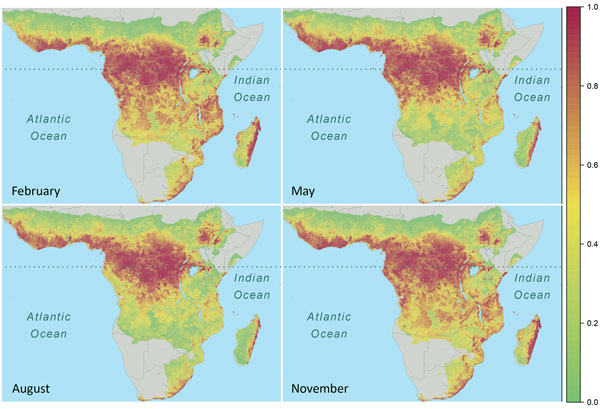Volume 23, Number 3—March 2017
Research
Spatiotemporal Fluctuations and Triggers of Ebola Virus Spillover
Figure 2

Figure 2. Seasonal spatiotemporal dynamics of Ebola virus spillover intensity (i.e., average density or expected number of points per unit area and month) as percentile values ranking predicted intensities at all grid cell locations within the region of Africa where annual rainfall was >500 mm for all months from January 1983 through December 2014. Panels capture shifts in the geographic pattern of spillover intensity seasonally. Dotted horizontal line marks the equator.
Page created: February 24, 2017
Page updated: February 24, 2017
Page reviewed: February 24, 2017
The conclusions, findings, and opinions expressed by authors contributing to this journal do not necessarily reflect the official position of the U.S. Department of Health and Human Services, the Public Health Service, the Centers for Disease Control and Prevention, or the authors' affiliated institutions. Use of trade names is for identification only and does not imply endorsement by any of the groups named above.